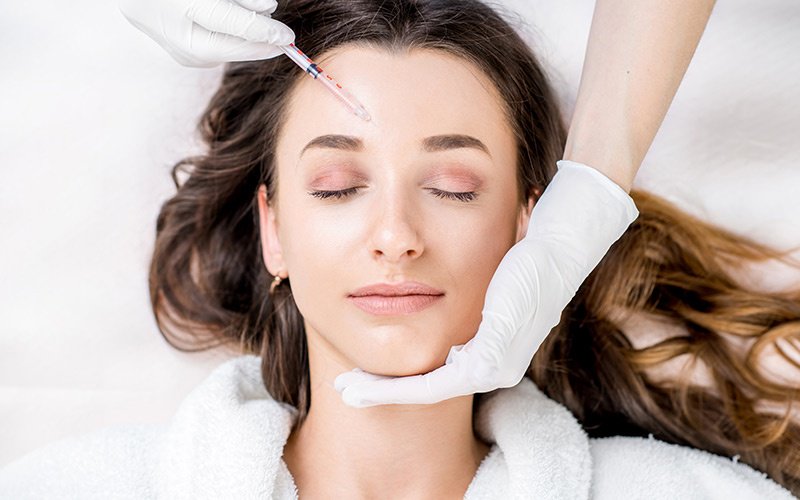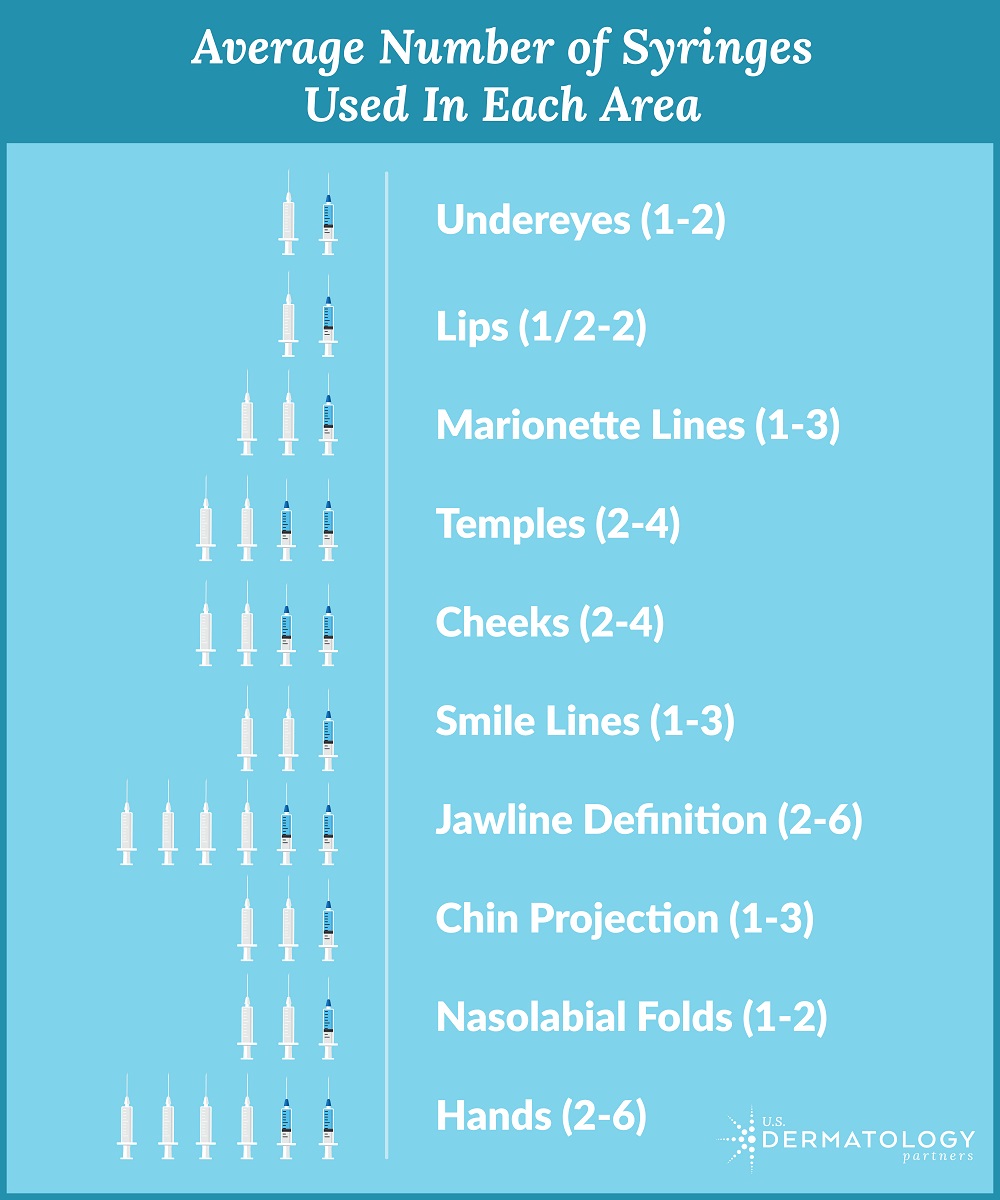Botox injections have become the most popular non-invasive cosmetic procedure in the United States — and there’s no sign of that popularity waning.
In 2017 alone, practitioners performed some 7.23 million Botox procedures, more than double the amount of all other dermal fillers combined, according to the American Society of Plastic Surgeons. (That’s a 2% increase from the previous year.)
More people of both genders and all ages are using Botox to help them achieve or maintain a youthful appearance, and as people have become more comfortable with it, they are using it to smooth forehead lines and crow’s feet, get rid of neck bands, lift the corners or their mouth or soften a square jawline.
“Even though many other procedures have been introduced since Botox first became popular in the late 1980s, Botox remains a go-to treatment for many people,” says Dr. Neeraja Mattay a board-certified dermatologist at Dermatology Associates of Northern Virginia Sterling. “Part of its popularity is the name recognition; people know to ask for it by name. But it wouldn’t remain popular if it didn’t give people results they were looking for. The fact that it continues to get more popular with time says a lot about what it can do.”
Here’s a look at what Botox is, how it works and other frequently asked questions.
What Is Botox?
Botox is the brand name for a toxin that comes from a bacterium that causes muscle paralysis. Although such paralysis can be serious when it is widespread, scientists discovered it could be used in small, diluted amounts to cause muscle relaxation.
How Does It Work?
Botox blocks the signal from the nerve to the muscles, which prevents the injected muscle from contracting. That causes wrinkles to soften.
How Does It Compare to Dysport?
Both Dysport and Botox are a form of botulinum toxin type A, and both work to block nerve signals to the muscles. They are manufactured differently and have different potencies, which can affect how long they last and how long it takes for the injections to take effect.
Dysport may spread more quickly, which can make it a good candidate for treating areas where more wrinkles are present, such as areas with crow’s feet. But it may not be ideal for every area, so it’s a good idea to discuss your goals and options with your dermatologist to help you decide which injection is best for you.
What Can Botox Treat?
Botox can treat more than just wrinkles. In fact, it was originally used to treat conditions like uncontrolled blinking (blepharospasm) and lazy eye (strabismus).
Today, it is approved for use to treat frown lines on the forehead and crow’s feet (those lines around the eyes). It can also treat lines on the nose, dimpling on the chin, skin bands on the neck and can be used around the mouth to correct smoker’s lines and corners of the mouth that turn downward.
Additionally, it has been very successful in treating hyperhidrosis, or excessive sweating, in the armpits. Other approved uses are for bladder dysfunction, chronic migraine headaches and certain neurological conditions.
Since Botox is not a filler that “plumps up” the skin to fill existing wrinkles, it can be less effective for wrinkles that were caused by sun damage and gravity.
Who Is a Good Candidate for Botox?
People who are bothered by wrinkles caused by normal aging generally are good candidates for Botox.
People who should not use Botox are:
- Women who are pregnant or breastfeeding
- Individuals with a neurological disease
- Anyone who is allergic to albumin (It is used in Botox formula.)
 What Can I Expect When I Get Botox?
What Can I Expect When I Get Botox?
Botox injections are given using a fine needle, so there is minimal discomfort. The procedure is done very quickly. Your practitioner will identify the areas where Botox is needed and determine how much is required for each area.
The number of injections will depend on your facial features and the extent of your wrinkles. Treatments will normally only take 15 to 30 minutes, and Botox can be combined with other procedures such as laser treatments, dermal fillers, microdermabrasion, and chemical peels.
Over the next three to seven days, your muscles will begin responding to the Botox injection and will stop contracting, allowing the skin to relax and reducing or eliminating the appearance of wrinkles. In some cases, it may take as long as two weeks for Botox to take full effect.
How Often Is Botox Needed?
Typically, Botox injections will last four to six months. The muscle action returns gradually, and as that happens your wrinkles will reappear. Additional treatments will then be needed to maintain your desired look.
The longer you continue Botox treatments, the less severe your wrinkles will appear between treatments because the muscles won’t need “re-trained” to relax.
How Much Does Botox Cost?
The cost of Botox injections can vary widely and will depend on where you live, as well as how advanced your lines and wrinkles are, how aggressive of a treatment you’d like and how much product will be required to achieve your desired results.
It’s also important to factor in the experience and qualifications of the individual performing the treatment. It’s best to make sure you’re using a practice with a board-certified dermatologist with experience in providing treatments.
Are There Any Side Effects?
Botox is generally very safe, but some individuals can experience side effects. Most often, these will be:
- Pain or bruising at the injection site
- Flu-like symptoms
- Nausea
- Headache
- Redness
It’s important not to massage the treated areas after receiving injections, as that can cause the Botox to move to another area of your face and lead to unwanted facial weakness or drooping. In very rare cases, the toxin can spread beyond the area of treatment and cause problems with breathing and swallowing or lead to slurred speech and muscle weakness.
“In most cases, Botox is extremely safe and successful, which is why it continues gaining popularity year after year,” Dr. Mattay says. “However, because there are side effects that can occur, it’s important to only get injections from someone who is experienced and qualified.”
Looking to Visit a Dermatologist for Botox?
To learn more if Botox is right for you, contact a U.S. Dermatology Partners provider near you. We have multiple locations throughout the country, so fill out our simple online form to get in touch with us. One of our local team members will reach out to you shortly to answer your questions or schedule an appointment for you to visit us soon.
Find a location near me
or


 What Can I Expect When I Get Botox?
What Can I Expect When I Get Botox?